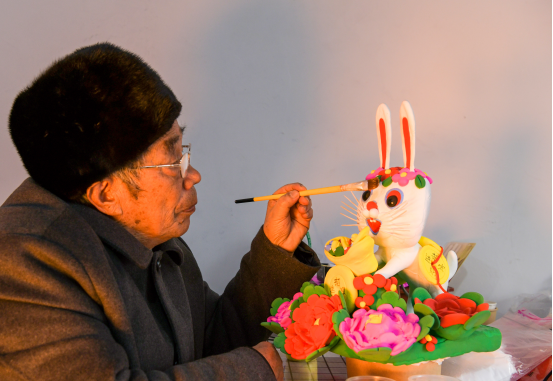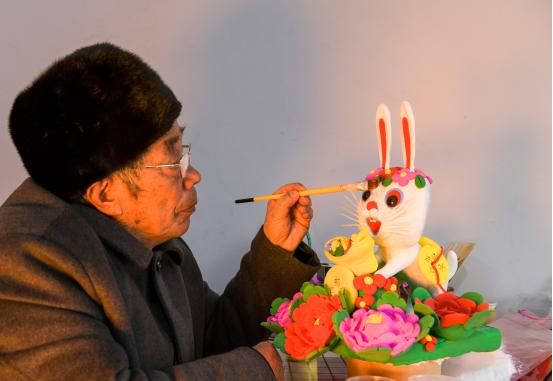
Photo shows that Li Tongzhong, a fork artist of dough figurines, is colouring a dough figurine of rabbit.
BEIJING, Oct. 26 (Xinhua) -- As Li Tongzhong rubs, kneads, twists and tugs, within seconds, a lump of dough is made into a lifelike figurine. Kids coming to learn the skill gaze at him with astonishment, thinking that he is a magician.
Li is an inheritor of the intangible cultural heritage of dough figurine making, which can date back to the Han Dynasty (202 B.C.- 220 A.D.). The handicraft art has been passed on for generations, as a key part of Chinese culture and folk art, presenting important materials for the study of Chinese history, archeology, customs and sculpture.
Through the years, the art form has developed into different schools presented in various ways in different regions, and Linmu County in east China's Shandong Province, is one of the regions.
Craftsmen in Linmu use glutinous rice flour with various pigments as main ingredients and make lifelike figurines only by hand and simple tools. Their work cover a wide range of subjects, with traditional ones including birds, animals, flowers and creative ones with cultural elements, such as the Monkey King and Pigsy from the famous Chinese novel "Journey to the West," Mu Guiying, a legendary heroine of the Song Dynast (960-1279) and heroes in "The Romance of the Three Kingdoms," which help kids learn about related historical stories.
The county has adopted a series of measures to make the traditional folk art more relatable to local people, such as promoting it during traditional festivals, exhibiting featured dough figurine products and encouraging the craftsmen to teach lessons, which has ignited passions for the handicraft among local people and enhanced the inheritance and development of the intangible cultural heritage.
(Edited by Li Shimeng with Xinhua Silk Road, lishimeng@xinhua.org)




 A single purchase
A single purchase









